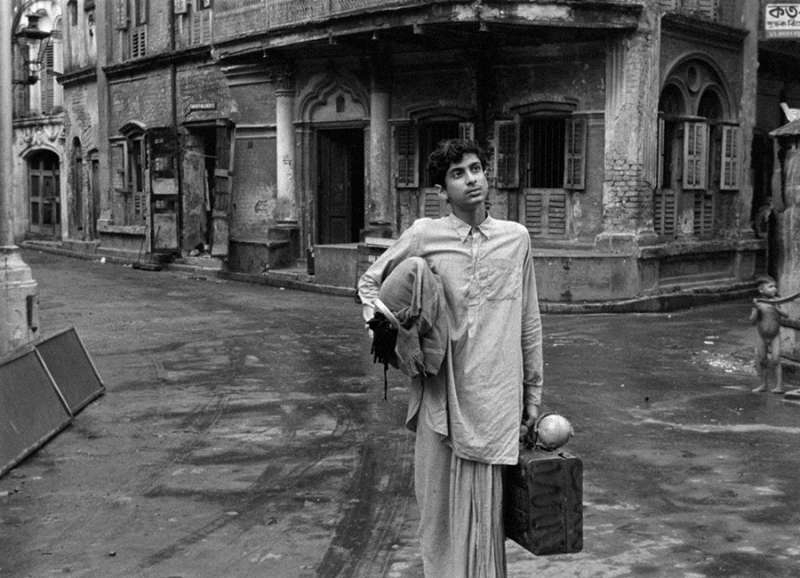Restoring Ray’s masterpiece that put Indian cinema on the world map “was challenging at every stage”, Peter Becker, president of the Criterion Collection and partner in Janus Films, a leading distributor of classic foreign films…told Arun Kumar

Working frame by frame for over a thousand hours in a labour of love spread over seven long years, top notch technicians have restored Indian master filmmaker Satyajit Ray’s masterpiece “The Apu Trilogy”.
The restored films – “Pather Panchali” (Song of the Little Road), “Aparajito” (The Unvanquished) and “Apur Sansar” (The World of Apu) – opened Friday in New York City and will open in many more American cities like Los Angeles, San Francisco, and Washington in the weeks ahead.
Restoring Ray’s masterpiece that put Indian cinema on the world map “was challenging at every stage”, Peter Becker, president of the Criterion Collection and partner in Janus Films, a leading distributor of classic foreign films, said.
The negatives of all three films about a poor boy growing up in India nearly a century ago burned in a massive nitrate fire in 1993 at Hendersons Film Laboratories in London where they were temporarily stored on way to Los Angeles for preservation at the Academy of Motion Picture Arts and Sciences.
“Collecting, scanning and comparing alternate film elements from around the world was a huge job by itself, but when the fire-damaged reels turned up at the Academy Film Archive, the restoration stepped up to a whole new level,” Becker said.
“Nearly 1,000 hours were spent just repairing the physical film material so that it could be scanned,” he said.
“Determining what was fixable using digital tools and when we would need to resort to our alternate elements was another significant load of work.”
“Even after all that, marrying and matching the elements and doing the digital restoration work took more than six months; so this one was challenging at every stage,” said Becker.

Criterion and Janus Films together restore about 20 or more international classic films every year, but not every film is ripe for a major theatrical release or multi-platform re-launch, Becker said.
“Last year it was the Beatles’ ‘A Hard Day’s Night’. This year ‘The Apu Trilogy’. These films were desperately in need of being seen again in high quality versions,” Becker said.
Given “the challenges associated with the restoration meant that if we were going to undertake the effort, we had to take a big bet that critics and audiences would embrace the films,” he said.
The key to restoring Ray’s work “was digital scanning and digital cinema projection”, said Becker, explaining how the old method of making a new print photo-chemically could not have achieved this result.
As the surviving parts of the original negative, even after repair, were unprintable, the film was scanned a frame at a time in super high 4K resolution.
Using precise and targeted digital restoration tools, “we were able to repair only the damaged parts of each frame” and “maximize the amount of original film we could use, matching positive and negative elements in the digital space without generational loss”.
Since “the entire process from scanning to final projection stays in the digital realm, we are able to show an image with a clarity and luminous quality that wouldn’t even have been possible with new prints in 1956”, when the films were made, Becker said.

Restoring the trilogy “was a very expensive project, but it was also a labour of love”, he said. “We work to control costs, but we did not tailor the restoration to a particular budget. We chose at the outset to do what needed to be done.”
The Academy Film Archive provided invaluable support as did L’Immagine Ritrovata, the laboratory of the Cineteca di Bologna, “who shared our passion and did the necessary film-repair work at a cost that didn’t sink the whole project”. So did the Criterion’s lab.
“Therefore, it is impossible to put an actual price tag on this work. Priceless is probably the best answer,” said Becker.
Asked how they planned to draw audiences to theatres, Becker said the trilogy will play all over the country starting with New York’s Film Forum and the Landmark Theatres chain with screens in many major cities.
The company’s social media presence on Twitter and on Facebook and Instagram will help drive the word-of-mouth for this release, he said.
“I think it will grow organically and that more and more theatres will adopt the films each week,” Becker said, noting: “That is also something we could not do in the age before digital cinema projection.”
Becker hinted that his company may restore and release other classics from India, but would not reveal the names. He is also dead set against colourising classics.
“We have never done it and won’t. We believe films should be shown as their makers intended them to be seen.